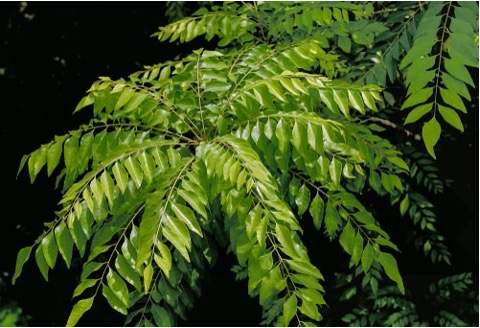Waterwise Exmouth
In 2022, the Shire of Exmouth received endorsement as a water wise council through Water Corporations Waterwise Council Program.
Exmouth is a semi-arid part of Australia the protection and preservation of groundwater is very important. Often groundwater resources have accumulated over long periods and are replenished only when rainfall is sufficient to infiltrate soil and rock. This means groundwater can be a finite, or slowly replenished resource.
Therefore, being waterwise within our community is extremely important for ourselves and generations to come.
Shire of Exmouth & Water Corp Water Saving Programs for 2023 - 2024:
Showerhead Swap
As part of the 2022 Waterwise Regional Showerhead Swap program, the shire of Exmouth has swapped over 70 showerheads with 50 new households participating. This has resulted in saving an estimated 970,000 litres of water!
Residents who are still yet to take part in the program are encouraged to bring their old shower head(s) to the Shire of Exmouth Administration office with a copy of their recent water bill to receive a free brand-new water saving shower head.
Shire of Exmouth, 2 Truscott Crescent (Located in the Ningaloo Aquarium & Discovery Centre), Exmouth. Open Monday to Friday 8:30am - 4.30pm (excludes public holidays) - (08) 9949 3000.
For more information about the showerhead swap program and other offers, please visit https://www.watercorporation.com.au/Waterwise/Waterwise-offers

Tips to decrease water use in the home & garden
There are many ways we can save water in the home & garden including taking shorter showers, using the half flush on the toilet, ensuring we have a full load before using dishwashers and washing machines.
In the garden we can plant waterwise plants, regularly checking and servicing irrigation and sweep instead of hose to clean outdoor areas.
For a huge amount of detailed water saving information and tips head to water corps advice page to start your waterwise at home journey.
How to Save Water at Home and in Your Garden | Water Saving Tips & Ideas | Water Corporation, Western Australia
Complete a Home Water Audit
Do you know how much water your household uses? A home water audit could help. Get the family involved and do a water audit to see where you use the most water in the house. Once you have completed the audit you can focus on reducing you water use in these high use areas. Every drop counts
Water Use Home Audit – for your home and family
home audit.pdf (seqwater.com.au)
Waterwise Plants
Plants suited to our climate need less water, are low maintenance and will look great in your garden.
There are a variety of water-wise plants that are well suited to Exmouth. Once established, these plants will only need at most, watering every four days during summer and less during cooler months. See examples of waterwise plant below.
Silver Cassia (senna artemisioides)
An evergreen shrub to 1.5 m high and wide with fine grey green foliage and clusters of yellow flowers from mid-winter to spring followed by persistent large flat brown seed pods. Great choice for the home garden as it is drought tolerant once established and tolerates a wide range of soil types. Lightly prune to shape after flowering.

Wild Rose (Diplolaena grandiflora)
Rounded, evergreen shrub that can sometimes spread to 3 metres high. Fairly dense, mid green foliage and rose-pink flowers that attract birds for several weeks over winter or spring. Prune after flowering to increase bushiness. Grows naturally in coastal limestone soils.
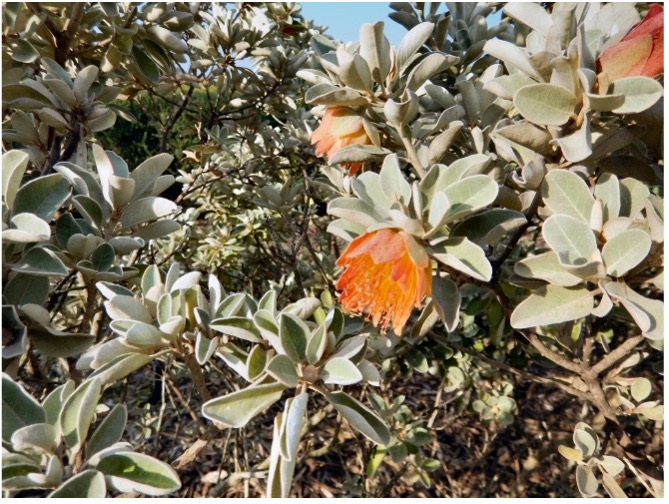
Spotted Emu Bush (Eremophila maculate)
A fast-growing, very hardy, evergreen shrub usually reaching about 1 metre high. Leaf size and colour are variable, as is the colour of the tubular flowers produced during winter and spring. The common name refers to the spots in the throats of the flowers. Responds well to pruning and needs full sun.
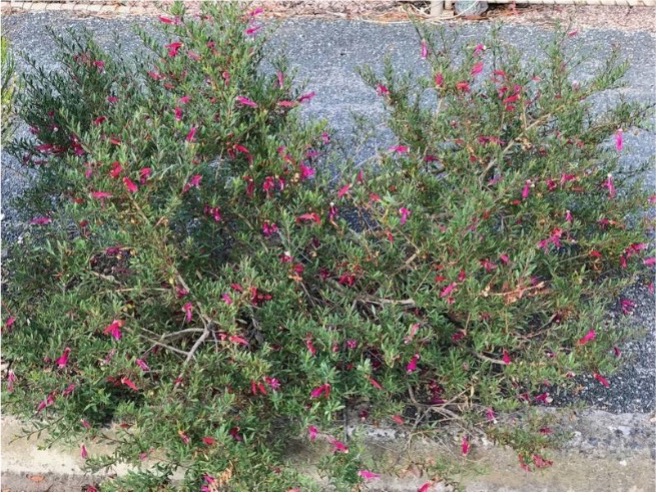
Lemon grass (Cymbopogon)
Clump-forming grass to 1 metre high and 50 cm wide. Blue-green leaves with swollen bases. Strong lemon fragrance when crushed. Needs full sun, well-drained soil, loves the heat and is drought tolerant once established. Plants closely related to this one are known to be weeds in other parts of Australia. Native Lemon Grass (Cymbopogon objectus) is smaller and less invasive.
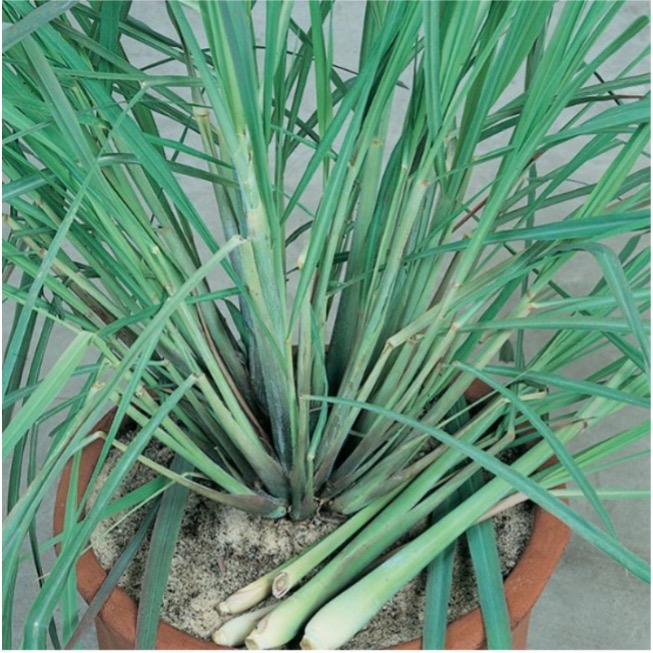
Empire Zoysia Grass (Zoysia japonica)
Empire Zoysia grass is a medium-bladed, dark green grass that thrives in extreme heat and humidity. It is low maintenance due to being a slow grower and requires low watering - 40ml per week (Over 2-3 days) in Summer, no watering required during Winter.
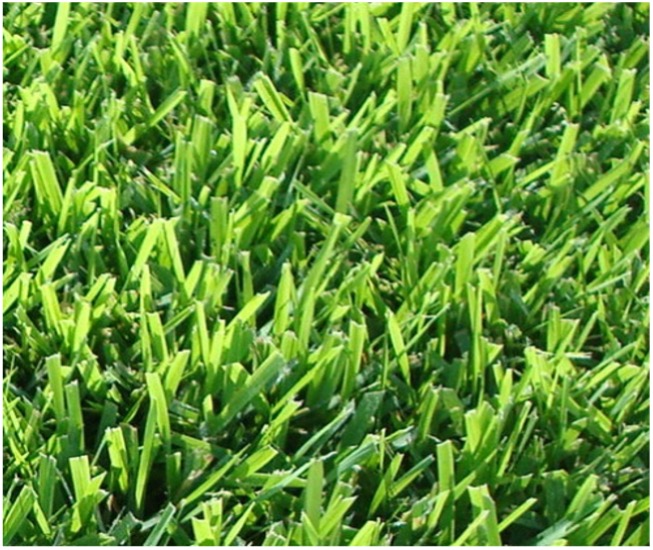
Yellow Feather Flower (Verticordia chrysantha)
An evergreen shrub to 1 metre high and wide with an open branching habit. Small short green leaves on the upper stems and massed yellow flowers from late winter to early summer. Needs a sunny position and light pruning after flowering. Once established it is drought-tolerant but for optimum growth and flowering it is best watered once a week at the base of the plant.

West Coast Gem Native Hibiscus (Alyogyne huegelii)
Fast growing, dense, rounded shrub to about 2.5 metres high and across with dark green foliage and blue-purple flowers in spring and early summer. Grows well in most soil types which are well draining. Low water needs once established. Mulch well to help retain moisture during dry periods.
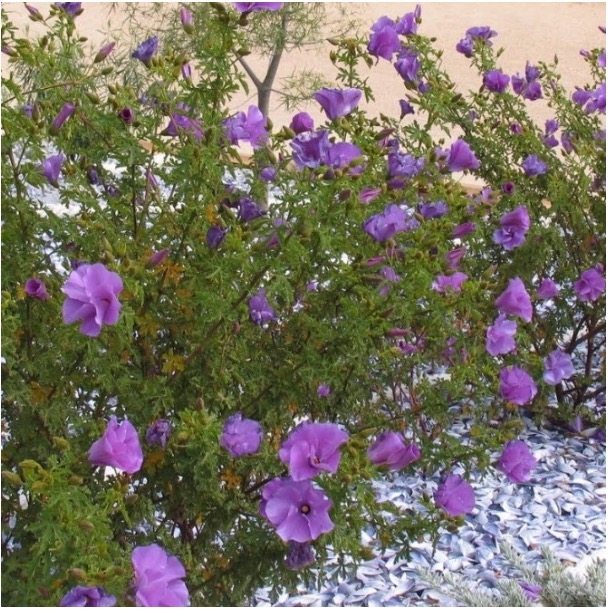
Berry Saltbush (Atriplex semibaccata)
Bushy shrub with grey foliage. White flowers are followed by red to purple berry fruits in summer. Saltbush thrives in sand and clay loam soils that have a slight salinity. It is a hearty drought tolerant species that can survive in hot barren climates, but often dies back in the driest of summer months.
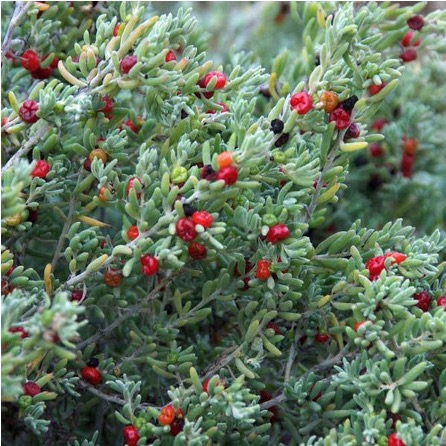
Rosemary (Rosmarinus officinalis)
Rosemary is a woody perennial herb with fragrant evergreen needle like leaves. It loves a hot dry climate and grows in a range of well drained and slightly alkaline soils, making it a great choice for drought tolerant gardens.

Curry Leaf Trees (Murraya koenigii)
The curry leaf tree is a large shrub to small tree, which grows to 2 to 3 m in height. The foliage has a strong pungent aroma and is highly desired for its flavour in Indian and Sri Lankan dishes. It is drought tolerant, very hardy and makes an excellent ornamental shrub. The curry leaf tree is best suited to warm temperate to sub-tropical climates.
